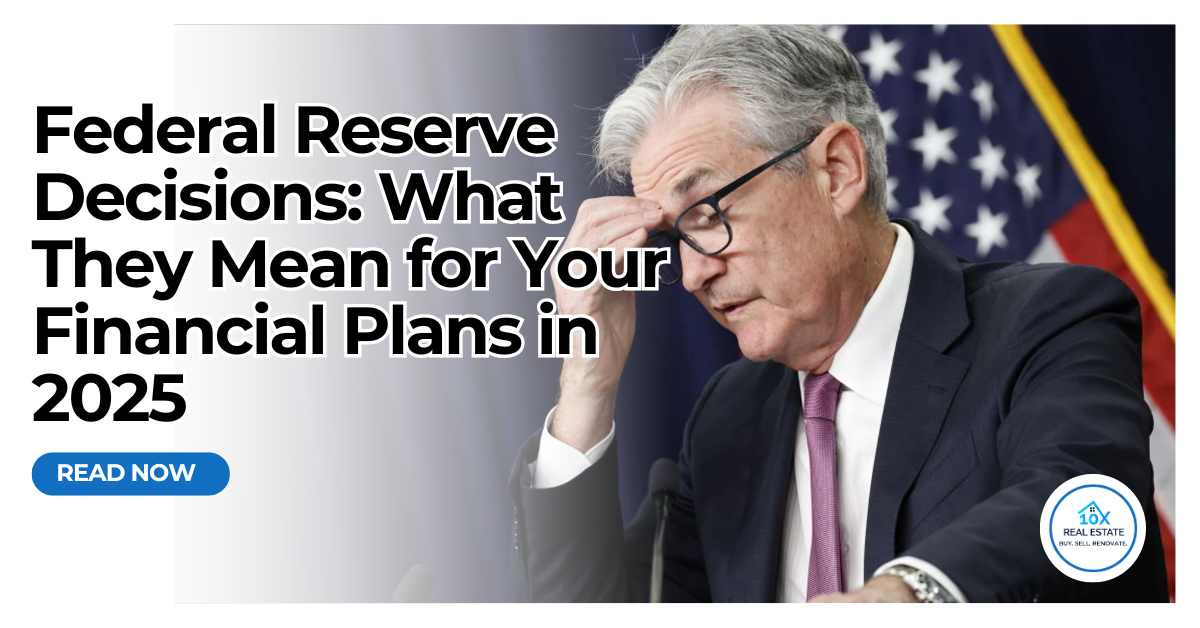President-elect Donald Trump laid out some big ideas on the campaign trail to make life more affordable and boost the economy—two priorities for many voters. While some of these proposals are ambitious, they’re still mostly short on specifics. Plus, to make them happen, Trump will need Congress’s support, which could be a challenge in today’s polarized climate.
Here’s a breakdown of some key economic promises from Trump’s campaign, how they could affect you, and what they might mean for the economy overall:
Extending Tax Cuts for Individuals and Businesses
- What He Promised: Trump wants to keep the 2017 tax cuts rolling, meaning lower income taxes and estate taxes for individuals. He’s also eyeing a potential corporate tax reduction to around 15% for some businesses.
- Why It Matters: Lower taxes mean people have more disposable income to spend, which could drive growth. For real estate investors, expanded SALT (state and local tax) deductions would be a big win, especially in high-tax states. But there’s a flip side—keeping these cuts long-term could increase the national debt, which may prompt future budget cuts elsewhere.
Cutting Taxes for Middle- and Lower-Income Workers
- What He Promised: Trump has pledged to remove federal taxes on tips, Social Security benefits, and overtime pay, and he’s considering a tax credit for family caregivers.
- Why It Matters: For workers who rely on tips and overtime, these cuts would put more money in their pockets. However, if payroll taxes are reduced, it could mean less funding for Social Security, potentially creating long-term financial issues for retirees. More disposable income might mean an increase in homeownership or even renters seeking better housing, but funding concerns could impact seniors relying on Social Security.
Raising Tariffs and Reconsidering Trade Policies
- What He Promised: Trump wants to put new tariffs on imports, particularly goods from China or products made by U.S. companies that move operations abroad.
- Why It Matters: The goal is to encourage American-made products, but higher tariffs also mean prices might increase for some everyday goods. If trade tensions rise, retaliatory tariffs could impact American exporters. For real estate, tariffs on imports could make building materials more expensive, which would impact housing prices and construction costs, although job growth in manufacturing areas might help offset that in local real estate markets.
Making Housing More Affordable
- What He Promised: Trump plans to roll back regulations to ease housing costs, open more federal land for development, and reduce mortgage rates.
- Why It Matters: If regulatory rollbacks open up more land and lower the cost of new construction, we could see more housing supply, which may help moderate prices. However, the Fed has more control over mortgage rates than the White House, so lowering those may be harder to achieve directly. For real estate investors, this might mean more opportunities in housing development, though an increase in supply could slow property appreciation in some areas.
Lowering the Cost of Living
- What He Promised: Trump has a plan to bring down the cost of essentials like gas and groceries, with an emphasis on expanding oil and gas production in the U.S.
- Why It Matters: Increasing domestic energy production could help stabilize or lower fuel costs, although global markets still largely influence gas prices. Lower transportation and energy costs mean more disposable income for families and lower operating expenses for businesses. This could make housing more affordable to own and maintain and encourage residential growth in suburban or rural areas.
Reviving U.S. Manufacturing with Tax Cuts and Tariffs
- What He Promised: Trump’s vision is to spark a U.S. manufacturing comeback by lowering corporate taxes even further and imposing penalties on companies that outsource.
- Why It Matters: If successful, this push could create new jobs in the U.S. manufacturing sector. But tariffs and other measures might drive up material costs for industries that rely on imported parts, which could make some projects pricier. A manufacturing boost could mean more demand for industrial and commercial real estate, but developers might have to weigh the cost of higher-priced materials.
Tackling Health Care Costs
- What He Promised: Trump mentioned he wants to lower health care costs, though specific plans remain vague. During his previous term, he tried to repeal the Affordable Care Act (ACA) without a clear replacement.
- Why It Matters: Health care is one of the biggest expenses for American families, so any moves to reduce costs would benefit household budgets across the board. On the flip side, if health care changes are made without a solid alternative to the ACA, it could create uncertainty for millions who depend on current coverage options. Lower health costs mean more financial freedom, which could increase spending on housing, although major health care shifts could create challenges for some families’ long-term financial planning.
Bottom Line
Trump’s agenda covers a lot of ground, from tax cuts to tariffs, all aimed at affordability and economic growth. While these ideas could reshape many aspects of the economy, from job growth to housing prices, they’ll need to pass through Congress before they can make a real impact.
For the real estate market, Trump’s policies could influence demand, shape investment opportunities, and affect costs across the board. Investors, homeowners, and renters alike will want to keep an eye on these developments, as they could bring new opportunities along with some unique challenges.




